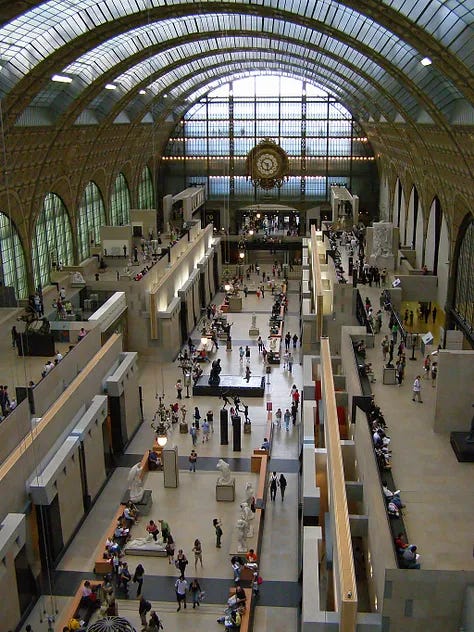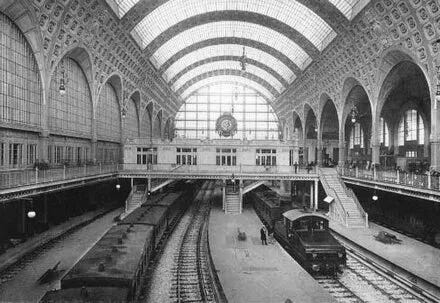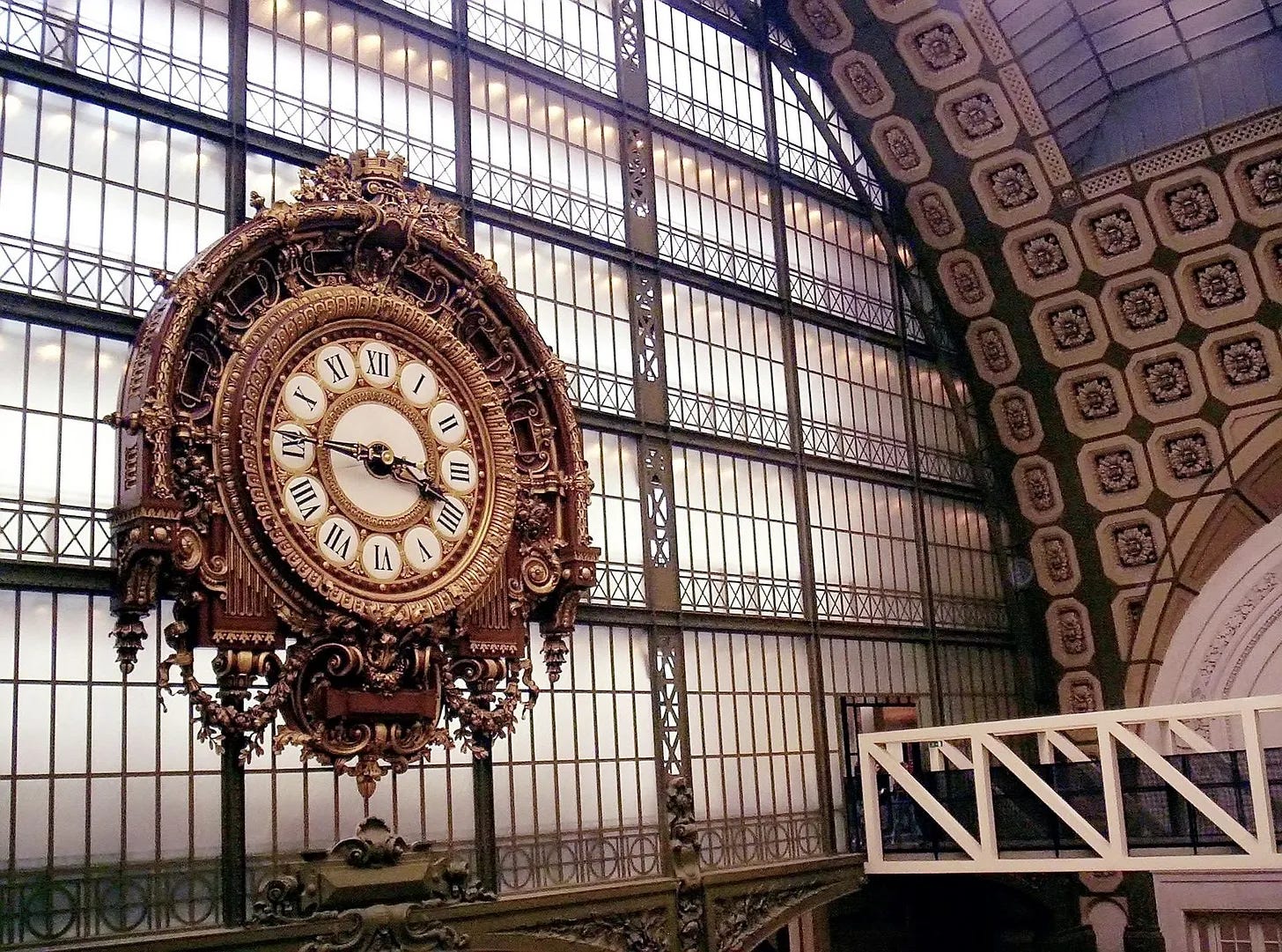The train station that is the Musée d’Orsay
Une job de rénovation superbement réussie.
If there is a way to travel across the Atlantic Ocean and land anywhere in Europe elegantly and with a rested, even chirpy attitude, I haven’t found it yet and not for lack of trying. I have done jet lag very wrong once, in 1997. I went to Paris from Quebec City, landed at about 10 am local time, stumbled through RER and metro to wherever I was staying, begged to have the room early and went to bed at 1 pm… only to wake up at 8 pm completely fuckaroid (a technical term of my own), like I’d just emerged from a drug-induced stupor. I have vivid memories of roaming the streets in search of food and a way to fall back in line with the time zone and finding nothing more interesting than beer at McDonald’s. I do not recommend it. Kronenbourg is gross.



Since then, every time I fly far enough to cross four times zones or more, I follow the same rules. I tell my body to forget about what time it is at home and to behave like it should at whatever time it is where I land. While I can have a short nap — reclining but not lying down — I absolutely am not allowed to go to bed before 7 pm local time. It makes for a tiring first day but by the next morning I’m good to go. No confusion whatsoever.
So when I took Eldest for a quick-and-crazy trip to Paris to celebrate her graduation earlier this year, I had a solid plan. Land at Charles de Gaulle at 10 am, take RER/metro to hotel, beg for early access to room, drop bags and indulge in quickie cleanup, head back to metro for a 3:30 visit to the Musée d’Orsay to see the extraordinary Impressionist exhibit, light early dinner and bed.
That exhibit, by the way, is in Washington D.C. now and until January. Totally worth it.
I wish we’d been less bedraggled by our flight and long-ass day to explore more of that museum than we did, which is just as good a reason as any to go back to Paris next spring.
More than the collections, which are spectacular, we were in awe of the atmosphere in the building. I had never visited that museum before and was entirely unaware that it used to be a major train station for the Paris-Orléans train. It was converted in a museum in the latter part of the 20th century.
It was done so well, keeping the end-user — including heavy-footed sleepy foreigners — in mind. The place is easy to navigate and pleasant to be in. Like every good museum does, it encourages you to just sit and absorb the vibe. Nobody is rushing you anywhere, not even that ginormous clock in the main hall.
On pensera à remercier l’ancien président Valéry Giscard d’Estaing pour cette joyeuse idée d’utiliser l’ancienne gare et de la transformer en Musée d’Orsay, sur la rive gauche de la Seine à Paris.
L’ambiance et l’espace nous ont marquées fortement en avril dernier lors de notre visite. Et on y était le jour de notre arrivée au pays. On traînait de la patte et pas à peu près à cause du vol interminable et dépourvu de sommeil satisfaisant, même après avoir dégusté une inoubliable mousse au chocolat juste avant le musée.



On songe à retourner à Paris au printemps, et pas juste pour visiter d’autres collections du Musée d’Orsay, à part celle, fort impressionnante, des oeuvres impressionnistes. Mais en plus, je veux prendre le temps d’examiner les recoins de l’édifice pour en faire un portrait plus exhaustif du point de vue du confort de l’utilisateur humanoïde. Et faire l’exploration de la gare, toujours en fonction, qui se trouve au sous-sol du Musée. J’apprécie surtout la connexion électrique (profil aérien de contact, que ça s’appelle), qui permet l’alimentation électrique du train. On aurait avantage à utiliser ce genre de technologie ici, nous qui sommes si bien servis par les réseaux électriques.



